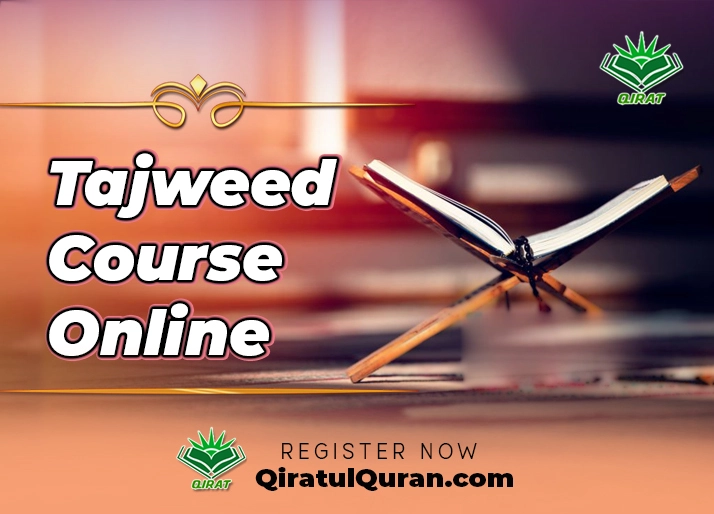To Learn Noorani Qaida with Tajweed is essentially an alphabet book used to teach children how to read the Quran. It provides instruction on pronouncing the Arabic letters correctly along with their shapes. Learning Noorani Qaida with proper tajweed (intonation and pronunciation rules) lays a strong foundation for students to then further progress towards reading and memorizing the Quran accurately. Qiratul Quran will provide guidance on learning noorani qaida with tajweed.

The Importance of Noorani Qaida
Why Learn Noorani Qaida
Noorani Qaida serves multiple purposes:
Teaches Correct Makharij
It teaches the correct makharij – the articulation points in the mouth from where each letter originates. Each Arabic letter has a specific point from where it is emitted such as from the throat, tongue, lips, or nasal cavity.
Covers Characteristics of Letters
The noorani qaida covers characteristics of how to pronounce each letter such as which letters are uttered from the nose vs throat, which require the tongue to be lowered or raised etc. Understanding these traits is essential to pronouncing words correctly.
Builds Fluency
Building fluency with the alphabet through regularly practicing the Noorani Qaida helps students gain command over reading Quranic words and verses easily. Fluency stems from reading the alphabet repetitively with ease.
Why Learn Tajweed
Learning tajweed or studying the rules of correct intonation when reciting the Quran is necessary for every student beginning Quran lessons. Here is why:
Part of the Quranic Directive
Applying tajweed is part of the Quranic directive to recite it in the manner it was revealed i.e. with tartil (recitation following tajweed rules).
Preserves Quality of Recitation
Observing the rules of noon sakinah, mim sakinah, lam sakinah, mad, idghaam, etc ensures the quality of recitation is maintained as intended.
Consistency in Learning
It makes the learning consistent, uniform, and structured vs leaving pronunciation open to individual interpretation. Centuries worth of scholarship has protected correct enunciation through tajweed.
How to Learn Noorani Qaida with Tajweed
Familiarize yourself with Alphabet Shapes Visually
Before reciting aloud, students should go through the new lesson and visually familiarize themselves with the shapes of the alphabet it covers. Observe how letters change shape depending on where they appear in a word (beginning, middle, or end).
Recognize Letters Auditorily
Then listen to a qualified Qari (teacher) read the lesson properly with tajweed. Absorb how each letter and combination of letters sounds. This trains the ears to identify letters auditorily.
Oral Practice Along with Teacher
Now practice reading out loud after the teacher, letter by letter. Pay attention to lip and tongue placement for each makhraj. Go slow instead of rushing through the lesson. Repeat multiple times if struggling with any particular alphabet or its characteristic Tajweed rule.
Listen to the Teacher Recitation Again
Re-listen to teacher recitation and recognize where student pronunciation differs from the teacher’s. Figure out the exact point where mouth position or tajweed rule application differs.
Repeat Practice
Repeat after the Qari again, applying insight gathered from the last step. Get feedback from the teacher on accuracy.
Proper oral practice with a qualified teacher is key as students’ ears and mouths get trained over time through regular recitation sessions.
Key Tajweed Rules in Noorani Qaida
Noon & Meem Sakinah
These rules deal with reciting ‘N’ or ‘M’ letters when they have no vowel sound on them (called sakinah). They must be read with a ‘gliding’ effect rather than fully pronouncing them.
For example, recite ن in أرني or م in يسألوم incorrectly as ‘ArnEE’ or ‘yas-aa-loo-MEEM’ vs the correct way with izhar of Noon and meem sakinah as ‘Ar-nEE’ and ‘yas-aa-loo-MM’.
Madd Rules
Madd means to prolong certain letters for the specified length depending on if the madd letter has a fat’h, dhammah or kasrah vowel.
For example, prolong the laam in الرَّحْمَنِ based on its fat’h vowelling and prolong noon in جِنَانٌ as per its kasrah vowel.
Idaafah enunciation
Idaafah refers to joining two words together, connected via a fathatan vowel, with clear distinct enunciation vs running them together incorrectly.
For example in الْحَمْدُ لِلَّهِ, the dhammah at end of alhamdu would incorrectly run into lillah whereas tajweed requires pronouncing the end dhammah distinctly then connecting laam of lillahi with a fathatan.
Qalqalah articulation points
Qalqalah refers to emitting strong vibration or resonance from certain letters if they have a sukoon symbol over them. Examples are ق, ط , د , ب , ج when appearing with a sukoon over them. They vibrate from the articulation point.
Correct application of these key rules of tajweed while learning noorani qaida sets a solid base for students to then apply these concepts fluently when reading verses of the Quran over time.
Overcoming Common Challenges
Persistence Over Perfection
As concepts get introduced over 30 lessons in noorani qaida, it can get challenging to apply all the rules simultaneously. Persist with daily practice focusing on accuracy more than speed. Perfection will come with time and repetition.
Quality Over Quantity of Recitation
Spend more time repeating one lesson properly using Tajweed instead of rushing through many lessons incorrectly missing key concepts. A strong foundation goes a long way.
Listen More than You Recite
Train your ears by listening extensively to quality recitation by sheikhs and qaris who are masters of tajweed. The more exposure your ears gain to proper tajweed application, the easier it will become to implement it yourself.
Summary of Learn Noorani Qaida with Tajweed
In conclusion, the Noorani Qaida handbook combined with tajweed application teaches the intricate science of pronouncing each letter of the Quran correctly. From makhraj pronunciation points to characteristics of each letter to special tajweed rules, they cover everything necessary to develop fluency. Guided oral practice with a qualified qari allows the student’s tongue and ears to grasp these concepts effectively through persistent repetition and self-correction. Learning with Qiratul Quran focus and dedication leads to impactful results for a lifetime, inshaAllah.





Pingback: Tajweed Course Online - Learn Quran Online with Tajweed